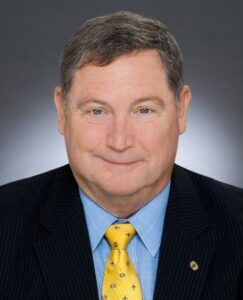 2 min read December 2021 — The international travel ban was lifted on Nov. 8, and Orlando’s airport is ready to welcome back visitors. Phillip Brown, chief executive officer of the Greater Orlando Aviation Authority, is optimistic as investment in air infrastructure is brought in. “Central Florida is really poised for growth because we offer a variety of experiences, from theme parks to natural beauty,” Brown told Invest:. “People are cooped up and they want to get out.”
2 min read December 2021 — The international travel ban was lifted on Nov. 8, and Orlando’s airport is ready to welcome back visitors. Phillip Brown, chief executive officer of the Greater Orlando Aviation Authority, is optimistic as investment in air infrastructure is brought in. “Central Florida is really poised for growth because we offer a variety of experiences, from theme parks to natural beauty,” Brown told Invest:. “People are cooped up and they want to get out.”
What are your expectations now that the United States has lifted international travel restrictions?
Central Florida has always had a large British demographic in terms of travel, but we haven’t received any flights from the UK since March 2020. We have airline partners who haven’t flown in more than 18 months. We’re getting staffed up to welcome those British passengers back. The other economic aspect is that there’s always been a number of British expatriates who have homes in Orlando, and they haven’t been able to visit those homes in a long time.
Our international flights have been primarily from Latin America, along with a flight from the EU that has operated since last March. The airlines are tasked with verifying compliance with all health guidelines so they’re working hard to make sure systems are in place.
What is the landscape for airlines at the airport, and are you expecting more to join operations?
We recently inaugurated a flight from Tweed New Haven Airport with Avelo Airlines, a low-cost carrier, which opens up a tier of the New England market. Frontier has also announced new routes, including several to destinations we have never had before. We still have Canadian carriers, such as WestJet and Air Canada. We have always had a large contingent of Canadians coming down here, particularly in the winter months. The advantage they have is their points of origin have been pre-cleared so they don’t have to go through federal inspections.
What are the most pressing air infrastructure needs in Central Florida?
We’re in the process of completing our South Terminal project. At the height of the pandemic, we made the difficult decision to reduce this $3.1 billion project by $260 million or so because we didn’t know if we would get the revenue to fund the contracts. We knew after the vaccinations rolled out that we would have a sufficient rebound in demand for the facilities so we identified state and federal funds to add those projects back. In October, we gained approval from the Department of Transportation for a $15 million grant. Half of that will go toward the ground transportation facility corridor.
How has the labor shortage affected the aviation industry?
We see the effects daily, particularly with food concessionaires who are having trouble hiring and generating revenue. Some of the flight cancellations over the past few months have been impacted by the availability of staff. Jobless rates are falling and we want to reintroduce folks into the industry who’ve been away, especially families and women who had to step aside from work to care for their children during the pandemic. We’re a relatively small employer, with about 850 employees, but there are 90 requisitions that we’re currently trying to fill. We expected to hit 98% of where we were during our high-water mark in 2019 by Thanksgiving.
How have disruptions in the supply chain impacted the aviation industry, and what are your strategies to mitigate this phenomenon?
It is directly impacting our South Terminal project because we can’t get steel for some elements. There are internal structures for experiential media with large LED screens and we’re having problems with the delivery of those products. Concessionaires have engaged in the build-out of their facilities in the South Terminal, but they still don’t have access to a full array of products for travelers, so there will be challenges potentially there as we move forward.
What is your outlook for the aviation industry over the coming three to five years?
We’ve revised our time frame for a rebound to pre-pandemic levels to 2023 from our previous expectation of 2025, given the vaccine rollout and the uptake in traffic that we saw starting in July. Our No. 1 challenge is to ensure we’re able to accommodate the airlines, which is why we’re pushing to complete the South Terminal projects.
Central Florida is really poised for growth because we offer a variety of experiences, from theme parks to natural beauty, that help us to attract travelers. We have a great environment, which is attractive to people who have been cooped up and want to get out.
For more information, visit:
